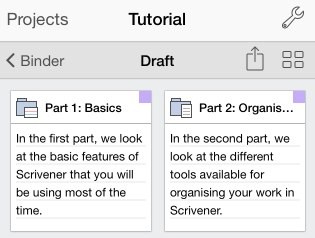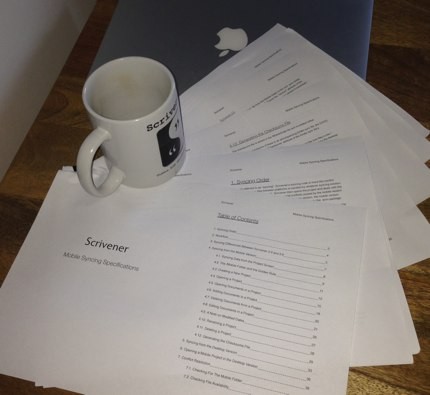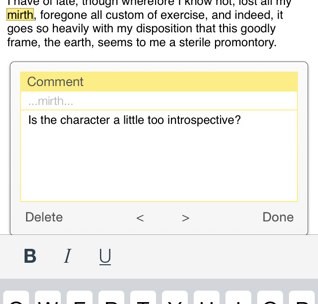We’re over halfway through 2014, so I wanted to give our users a quick update on the progress of the iOS version of Scrivener. We receive emails and forum posts daily asking how it is coming along, and because of how long it seems to have been in development, we've even had users assume that it has been abandoned (we've even been accused of lying about it being developed at all, but I promise that’s not the case, even if we have continually underestimated the time involved).
The short version - the "tl;dr" version as the cool kids say - is that we still expect it to be finished this year, but now very much doubt it will be released until next year (2015) because of the amount of testing we need to put it through before letting it loose on the world. Don't misunderstand - we are closing in on the final stages of development right now. But these final stages can still take a while, and I'd rather tell users now, in the middle of August, that we might be pushing into 2015, rather than keep my fingers crossed that we can squeeze it into 2014 and then only announce a delay at the last minute when we realise we aren't going to make our target. Thorough testing of the iOS version is crucial, because it is designed to sync with desktop projects, and syncing can be a dangerous process - we want to ensure that any bugs that could cause data loss or corruption are truly ironed out before putting it into users' hands.





3 Comments
hirum / 27 AUGUST 2014
Forget the iPad, how can I get one of those Scrivener coffee mugs?
Pete / 29 AUGUST 2014
Thanks very much for the update! I'm one of those who is waiting with anxious anticipation for Scrivener for iOS. Not only did I write my dissertation in Scrivener, but I've found it very useful as a college-course-planning tool. I use a Scrivener project to store all of my assigned readings, and to generate a syllabus, assignments, and to store email address lists and any other things I need to do. I am looking forward to being able to access all of these things on my iPad in class instead of having to pull out my laptop. Scrivener is such a fantastic tool for writing and more, and I appreciate your continued work on it!
-Pete
IaP / 03 SEPTEMBER 2014
@Hirum: We have a little store where you can buy Scrivener t-shirts, caps, mugs and other sundry (using our original 2007 logo) here: http://www.cafepress.com/litnlat/
@Pete: Thanks for sharing how you use Scrivener!
Please sign in or register to comment on this post.
Register
Sign in
Forgotten password